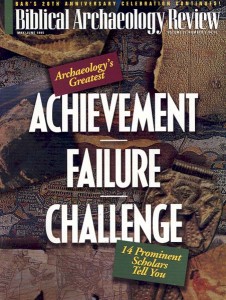What is Biblical archaeology’s greatest achievement? What is Biblical archaeology’s greatest failure? What is Biblical archaeology’s greatest challenge?
BAR asked a wide variety of scholars to answer these three questions. Their replies appear below.
When we made this request, we worried that there would be too much repetition. But, as readers will discover, there is little duplication.
The respondents are a diverse lot of scholars—at all stages of their careers, women and men, New Testament and Hebrew Bible experts, field archaeologists and Bible scholars, Americans and Israelis, some who accept the Bible literally and most who do not. Not surprising, then, that they provide a variety of answers.
The reader will notice a distinct divergence in judgments regarding the extent to which archaeology has illuminated the Bible and the extent to which it should be used for this purpose. Some answers directly contradict others—for instance, David Ussishkin questions the very evidence that Bryant Wood relies on.
Moreover, some scholars say we should keep looking for more evidence of the pre-monarchic period, for example, or of an inscriptional archive; others say we should stop digging because we already have more data than we can absorb, especially because so much of it remains unpublished.
Some are obviously happy with the way we accumulate data. Others are dissatisfied and want archaeology to change direction and concentrate on new and different perspectives.
Already a library member? Log in here.
Institution user? Log in with your IP address.

